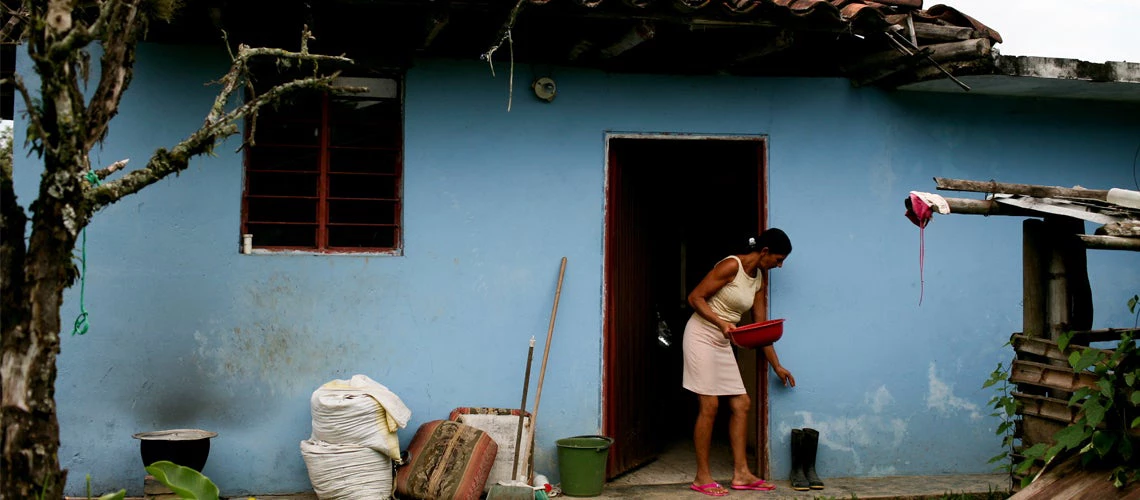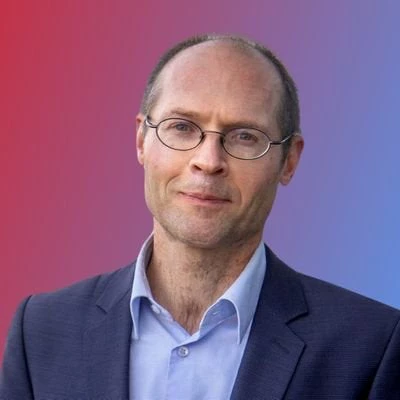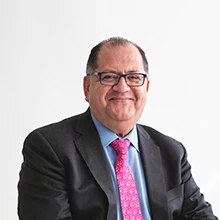 A poultry farmer near Santander, Colombia
A poultry farmer near Santander, Colombia
Poverty is multidimensional. If we think of classical thinkers, Adam Smith referred to the basis of self-respect and the importance of being able to “appear in public without shame,” while John Rawls wrote about “primary goods,” which included rights and liberties as well as income and wealth. Amartya Sen, advancing in formalization, brought the notion of “functionings” as the “beings and doings” effectively available to people in their capability set, so they can “pursue the life plans they have reasons to value.”
It is mainstream today to argue that poverty is multidimensional, moving beyond just access to goods and services . But exploring which dimensions are “appropriate” in each context has been a fundamental pursuit of development analysts and practitioners in recent decades.
It has been almost 30 years since Sabina Alkire devoted her work to the understanding, classification, and measurement of the many dimensions of poverty, particularly those that are “hidden” in our concepts and indicators. Indeed, there are some dimensions associated with experiencing the condition of poverty that cannot be so easily observed and have not been properly measured yet are very important when it comes to policy effectiveness. Those dimensions include aspects related to emotions that trigger behavioural responses: feelings of isolation, discrimination, effects on the sense of dignity and self-respect, and disempowerment. We have come a long way in our thinking about poverty, but our actions to tackle it and to understand the complex interactions between dimensions remains underdeveloped.
At the World Bank, the project on “Voices of the Poor,” started almost 30 years ago, strove to think differently about poverty. It drew on the views of 60,000 people living in poverty across 60 countries to better understand the challenges they faced, helping expand our understanding of poverty to include not only income and consumption but also lack of access to education and health, powerlessness, voicelessness, vulnerability, and fear. Later, in 2012, the Social Observatory project used a broader view of poverty dimensions to make anti-poverty projects more adaptive—and ultimately more effective. Since 2018, the World Bank’s multidimensional poverty measure has gone beyond monetary deprivation to include other dimensions such as access to education, health, nutritional, and basic infrastructure services. And in 2023, the World Bank began publishing the multidimensional poverty index—an effort by the Oxford Poverty and Human Development Initiative and the United Nations Development Programme—which is especially pertinent for low-income countries.
More recently, researchers from the University of Oxford and the global anti-poverty movement ATD Fourth World uncovered a set of “hidden dimensions of poverty” through a three-year participatory research project in six countries (Bangladesh, Bolivia, France, Tanzania, the United Kingdom, and the United States) that sought to further refine our understanding of poverty.
The teams identified nine dimensions of poverty that were common across all countries, despite the vastly different circumstances in each, using the “merging of knowledge” methodology. This approach brings together people in poverty (with their knowledge of the reality of poverty), academics (with their scientific knowledge), and practitioners (with their action-based knowledge). The identified dimensions included a lack of decent work or income, of course, but also feelings of powerlessness, lacking control, and experiencing “povertyism” (negative attitudes and behaviours toward people living in poverty).
These lesser-recognized and lesser-visible dimensions of poverty are no less important for policies designed to combat poverty than a person’s income or access to employment. Escaping poverty will be far more difficult if you don't also address the discrimination people in poverty face, the shame they experience, or the "aspirations gap" that results from being raised in a low-income household. But until now, policy makers have lacked the practical tools they need to properly capture and combat these hidden, and thus largely ignored, dimensions of poverty.
The Inclusive and Deliberative Elaboration and Evaluation of Policies (IDEEP) tool, which is being presented at this week’s ATD Fourth World, International Monetary Fund, and World Bank conference on Addressing the Hidden Dimensions of Poverty in Knowledge and Policies, is the first of its kind to help policy makers transform the findings of this research into action.
Created in partnership between the UN Special Rapporteur on extreme poverty and human rights and ATD Fourth World, the IDEEP tool supports policy makers in designing, implementing, and evaluating anti-poverty policies in direct partnership with people in poverty, ensuring all its dimensions, including those that are “hidden,” are taken into account .
This is crucial, given that policies that do not account for the views and lived experiences of people in poverty tend to be riddled with blind spots, particularly around these hidden dimensions. The IDEEP tool identified social isolation among disadvantaged communities as an unintended result of a housing project in Mauritius, for example, and institutional maltreatment resulting in fewer people accessing social protection benefits in France.
The right to participation is a human right. Only by upholding it will we achieve better informed, more effective, and more imaginative policy making. Yet the record of participatory processes in anti-poverty policy making is mixed, with policy makers often simply “informing” or “consulting” people in poverty, rather than recognizing them as the real experts about the obstacles they face.
To combat this, we need to go one step further in our efforts to fulfil the right to participation by introducing the idea of “deliberation,” which is defined in the IDEEP tool as bringing together different groups, including people in poverty, who meet, present arguments based on their unique insights, weigh them up, and propose actionable solutions.
The IDEEP tool offers a new, deliberative approach to anti-poverty policy making, one that recognizes the power imbalances inherent in traditional participatory processes and brings together different groups as equals to debate potential solutions before arriving at a consensus . This is a true merging of knowledge.
This approach is especially urgent as we rapidly head towards 2030, the target year for achievement of the Sustainable Development Goals (SDGs), including the goal of eradicating extreme poverty for all people everywhere (SDG1). If we continue on a path of business as usual, we will not achieve this ambitious goal. We need to widen our perspective and rethink how we can jumpstart a process of inclusive and sustainable growth for all; this includes engaging with those with lived experiences in poverty in the search for meaningful, holistic policy solutions. Without embracing this, efforts to combat poverty—and its hidden dimensions—will fall flat.



Join the Conversation